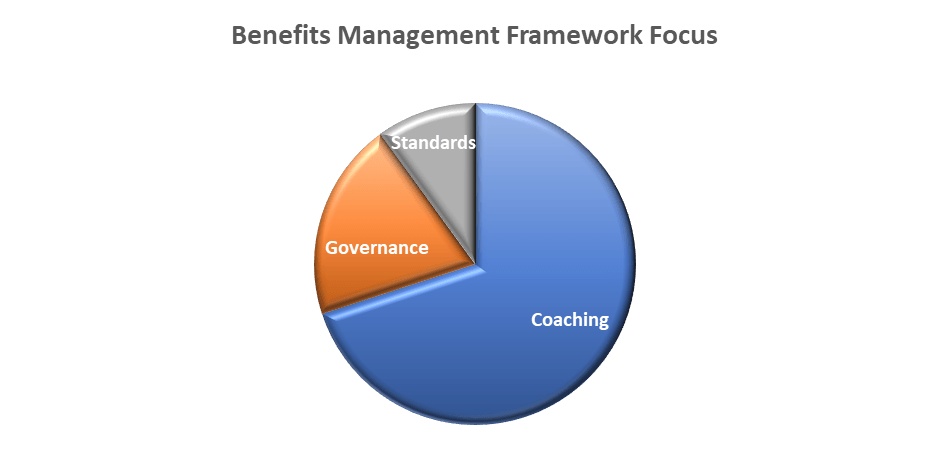Implementing a Benefits Management Framework
“Write injuries in dust, benefits in marble”
– Benjamin Franklin
Implementing a successful and sustainable Benefits Management Framework (BMF) requires a number of preconditions to be understood and addressed. From Seven Consulting’s considerable experience in working with clients to implement a BMF, the following are the key to integrating effective benefits management with project governance and management:
- Have a very committed and senior BMF Sponsor
As we mentioned in our companion blog, The Benefits Challenge, implementing a BMF will require senior executives, project managers and benefit owners undertaking the key project roles to be accountable for benefits planning and realisation. In many organisations, this could be confronting to some senior executives who are not experienced in effective project benefits management, in particular, so the BMF team will need strong “air cover”.
- Avoid complex benefit models
Too many BMFs involve complex and theoretical benefit constructs. Keep the benefit value chain as simple as possible. Simply, this means, projects make new money, save costs or improve internal or external service levels. All projects should directly lead to these benefits rather than creating a long and complex chain of events that must happen to eventually lead to benefits
- Embed and enforce consequences
Any person can sign up to produce benefits if they face no consequences for doing so. Having benefit owners sign-off that they accept the benefits they are expected to realise, baking expected benefits into forward plans, including financial and other plans, and having the sponsor regularly attest to the accuracy of their benefits plans and assumptions on a regular basis during project development are just some of the tools that can be used to enforce consequences (this is why “air cover” is so important).
- Avoid prematurely locking in benefits
Given the increasing rate of change that most organisations are facing, assumptions regarding benefits and benefit values are likely to change during the project development cycle. Indeed, the longer the project’s timeframe, the higher the probability this will happen. Locking in benefits too early in a project’s life-cycle can create unfair expectations and, in many cases, encourage sponsors to “low-ball” benefits – see next point.
- Accept that benefits and costs will change
The higher the execution risk of a project, the more likely the project will be subjected to disruptions. Every change in a project will have a potential impact on costs and benefits. The key is to balance consequences with the need to constantly monitor and review the status of critical project indicators – scope, benefits, costs, schedule, quality, risk and stakeholder engagement, for example. Sponsors must have the right to re-negotiate benefits when change occurs. This could include recommendations to stop the project if expected benefits have disappeared because of changes in the project’s environment.
- Engage and continually engage Benefit Owners
The key here is early and often. While sponsors should be held responsible for benefits, they can only do so with support from Benefit Owners (many of whom do not report to the sponsor). The conditions outlined in points 4 and 5 apply to Benefit Owners as well. Particularly important is the re-engagement of Benefit Owners just prior to implementation.
- Don’t forget total cost of ownership
Too many approaches to benefits and costs exclude the on-going costs of operations and the BAU effort required to keep the changes delivered by the project sustained. A comprehensive and honest calculation of Return-on-Investment must include development costs, benefits and the costs of on-going operations and support. The non-costing or under costing of BAU and operational costs has a distorting effect similar to the fabrication of benefits.
- Change Management matters … a lot!
The role of expert organisational change managers is often misunderstood in general project management but the role they play in enabling and supporting how people adjust to new processes, policies and practices critical to realising benefits is virtually ignored. Our experience is that change management support must occur during project implementation but, more importantly, throughout the on-going support cycle as people have to adjust to the increasing rate of new changes being delivered – read more – The Benefits Challenge blog.
- Provide over-the-shoulder support and coaching
It’s a long-accepted maxim that 70% of learning occurs on the job, 20% from coaching and 10% from formal courseware. The successful implementation of a BMF requires 70% coaching, 20% governance and 10% standards. A BMF should be supported by a small team with expertise in the BMF, as well as coaching, advising and project management/development models. These team members must be comfortable with both agile and waterfall development models as they help sponsors and project managers use the BMF, rather than remotely dictating compliance.

Benefits Management Framework Focus
- It’s about culture first and foremost
Implementing a successful and sustainable BMF is about changing behaviours that, in most organisations, have prevailed and been accepted for many years. It is all about people and their behaviours. No matter how elegant the Benefits Management Framework is, without addressing the cultural change and behavioural change the BMF implies, the sustaining of the BMF will be at risk.
Read more, go to The Benefits Challenge.
If you would like to discuss Benefits Management with us, please contact us.

by Rob Thomsett
